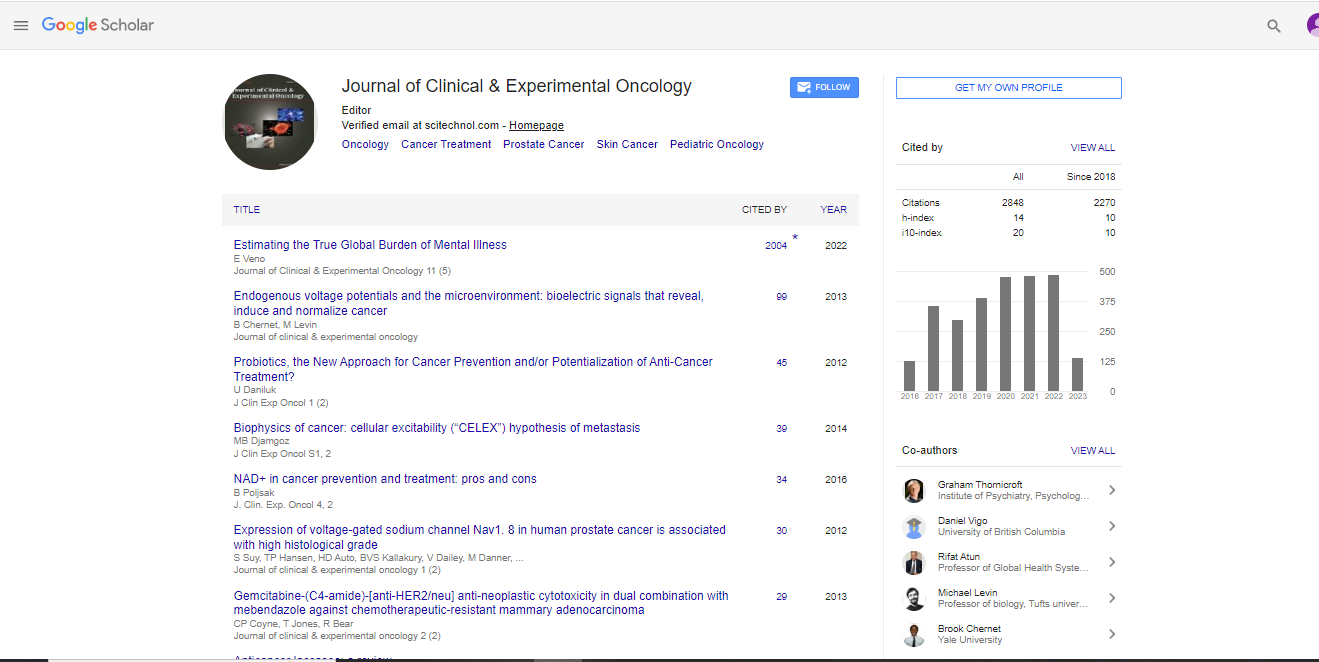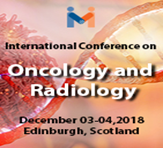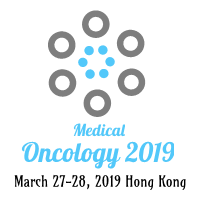Perspective, J Clin Exp Oncol Vol: 13 Issue: 2
Advances in Cytogenetic Technologies, types and their Applications
Anniker Biliard*
1Department of Laboratory Medicine, University of Pennsylvania, Philadelphia, United States of America
*Corresponding Author: Anniker Biliard,
Department of Laboratory Medicine,
University of Pennsylvania, Philadelphia, United States of America
E-mail: anniker_biliard@up22.edu
Received date: 22 May, 2024, Manuscript No. JCEOG-24-143923;
Editor assigned date: 24 May, 2024, PreQC No. JCEOG-24-143923 (PQ);
Reviewed date: 07 June, 2024, QC No. JCEOG-24-143923;
Revised date: 14 June, 2024, Manuscript No. JCEOG-24-143923 (R);
Published date: 21 June, 2024, DOI: 10.4172/2324-9110.1000410
Citation: Biliard A (2024) Advances in Cytogenetic Technologies, types and their Applications. J Clin Exp Oncol 13:2.
Description
Cytogenetics is the branch of genetics that studies the structure and function of chromosomes. It plays a key role in understanding genetic diseases, developmental abnormalities, and cancer. With advancements in technology, cytogenetics has evolved significantly, leading to improved diagnostic techniques and expanded applications in medicine. It explores the various types of cytogenetic technologies, their advancements, and their clinical applications. Cytogenetics involves the study of chromosomes through microscopic examination. Chromosomes are thread-like structures composed of DNA and proteins, located in the nucleus of eukaryotic cells. Human cells typically contain 46 chromosomes, arranged in 23 pairs. Abnormalities in chromosome number or structure can lead to genetic disorders and diseases.
Karyotyping is one of the oldest and most fundamental cytogenetic techniques. It involves the staining of chromosomes and arranging them in a standard format to observe their number, size, shape, and structure. Karyotyping can detect large chromosomal abnormalities such as aneuploidy and structural abnormalities (e.g., translocations, deletions, duplications). G-banding is a staining technique that produces a characteristic banding pattern on chromosomes, allowing for the identification of individual chromosomes and specific regions within them. This technique enhances the resolution of karyotyping, enabling the detection of more subtle chromosomal changes.
Fluorescence In Situ Hybridization (FISH) is a more advanced technique that uses fluorescent probes to bind to specific DNA sequences on chromosomes. This allows for the visualization of particular chromosomal regions or the detection of specific genetic abnormalities. FISH can identify microdeletions, micro-duplications, and gene rearrangements that are not visible through traditional karyotyping. Comparative Genomic Hybridization (CGH) is a molecular cytogenetic method that allows for the detection of Copy Number Variations (CNVs) across the entire genome. This technique involves comparing the DNA of a test sample to a reference sample to identify regions of gain or loss. Array CGH (aCGH) is a more refined version that uses microarrays for higher resolution analysis.
Next-Generation Sequencing (NGS) technologies have revolutionized cytogenetics by providing comprehensive and high-throughput analysis of the genome. Techniques like Whole-Genome Sequencing (WGS) and Whole-Exome Sequencing (WES) allow for the detection of both large-scale chromosomal abnormalities and single nucleotide variations. NGS is invaluable in diagnosing rare genetic disorders, identifying cancer-associated mutations, and studying complex genomic rearrangements. Single Nucleotide Polymorphism (SNP) arrays are high-density microarrays that analyze single nucleotide polymorphisms across the genome. These arrays can detect CNVs, uniparental disomy, and regions of homozygosity. SNP arrays are widely used in prenatal screening, genetic diagnosis, and cancer studies.
Chromosome conformation capture (3C) technologies 3C and its derivatives (e.g., 4C, 5C, Hi-C) are techniques that study the threedimensional organization of the genome. These methods provide information into chromatin interactions, gene regulation, and structural variations. 3C technologies are essential for understanding the spatial organization of chromosomes and its implications in disease. Cytogenetic techniques are extensively used in prenatal diagnosis to detect chromosomal abnormalities in fetuses. Karyotyping and FISH are commonly employed for analyzing amniotic fluid or chorionic villus samples. Advanced techniques like aCGH and NGS provide higher resolution analysis, enabling the detection of sub-microscopic abnormalities that could lead to developmental disorders.
Chromosomal abnormalities are a common sign of many cancers. Cytogenetic analysis plays an essential role in cancer diagnosis, classification, and prognosis. Techniques like karyotyping, FISH, and SNP arrays are used to identify specific genetic alterations associated with different types of cancer. NGS allows for the comprehensive profiling of cancer genomes, identifying driver mutations and potential therapeutic targets. Cytogenetic analysis is fundamental in genetic counseling for families with a history of genetic disorders. Identifying chromosomal abnormalities can provide valuable information about the risk of recurrence and guide reproductive decisions. Techniques like aCGH and NGS are particularly useful in cases where traditional methods fail to identify the underlying genetic cause. Cytogenetic analysis is applied in the evaluation of infertility and recurrent pregnancy loss. Karyotyping and FISH can detect chromosomal abnormalities in individuals and embryos, guiding decisions in assisted reproductive technologies like In-Vitro Fertilization (IVF).
Conclusion
The field of cytogenetics has seen remarkable advancements, driven by the development of advanced technologies. From traditional karyotyping to high-throughput next-generation sequencing, cytogenetic techniques have become indispensable in diagnosing genetic disorders, guiding cancer treatment, and advancing the understanding of the genome. The integration of these technologies into clinical practice continues to improve patient care and outcomes, emphasizing the vital role of cytogenetics in modern medicine. As studies progresses and new innovations emerge, the future of cytogenetics promises even greater information into the complexities of the human genome and its implications for health and disease.
 Spanish
Spanish  Chinese
Chinese  Russian
Russian  German
German  French
French  Japanese
Japanese  Portuguese
Portuguese  Hindi
Hindi 



